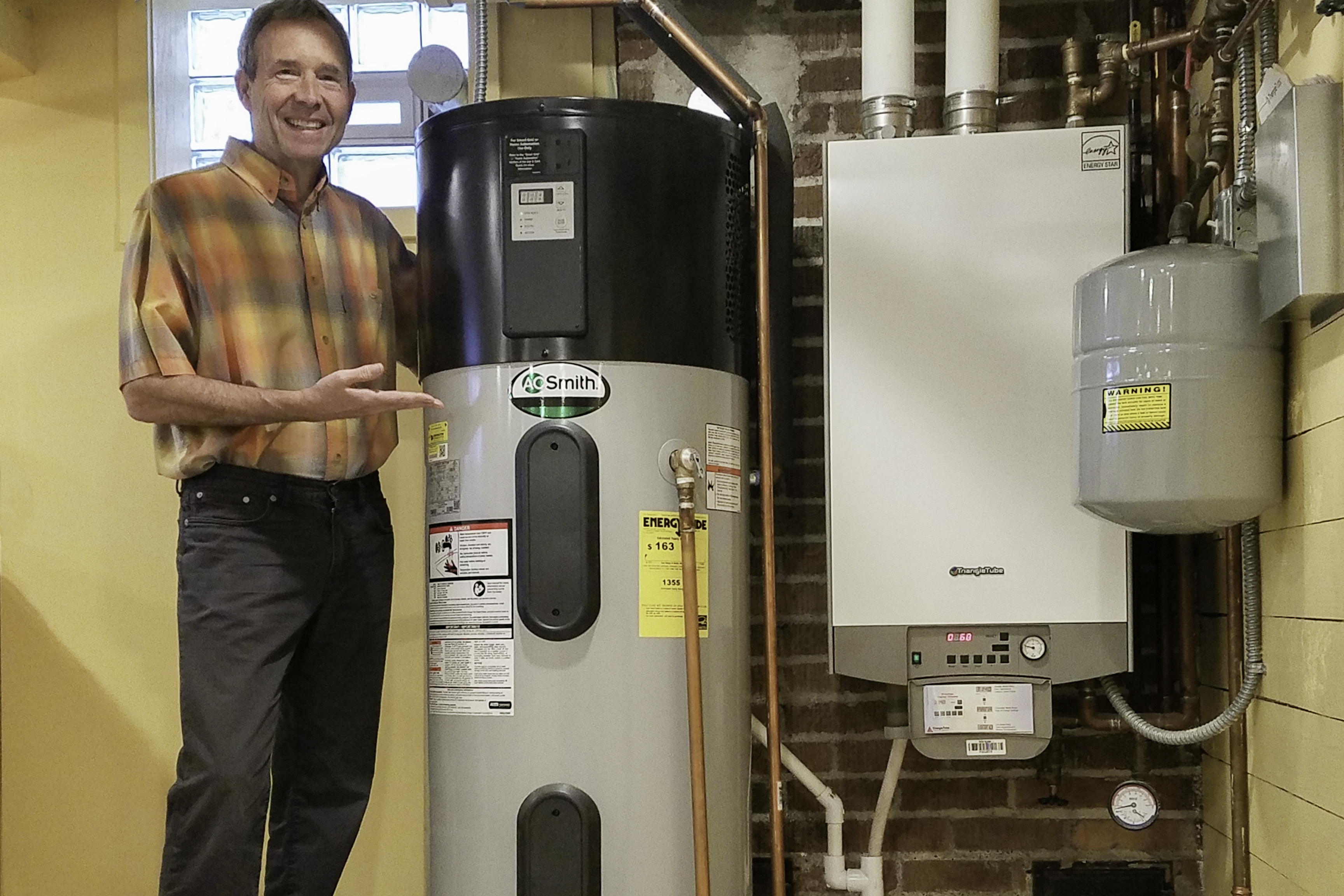 Our family considers climate change an urgent problem, and we are taking actions in our household to cut carbon pollution while welcoming clean energy technologies. So far, the Hamiltons have cut our household emissions by at least 10,000 pounds per year. Here’s a report on our most recent climate action.
Our family considers climate change an urgent problem, and we are taking actions in our household to cut carbon pollution while welcoming clean energy technologies. So far, the Hamiltons have cut our household emissions by at least 10,000 pounds per year. Here’s a report on our most recent climate action.
In May 2017, we replaced our home’s old natural gas-fired hot water heater with a heat pump water heater. This appliance makes hot water by extracting heat from the ambient air surrounding the device, employing the same sorts of compressors and refrigerants that refrigerators and air conditioners use to perform their work.
Before we took this step, we first examined all the alternatives, and armed with energy data, we chose a heat pump water heater because it is the most efficient means to eliminate fossil fuels for heating water. The highest-rated conventional storage water heaters and tankless water heaters have at best energy factors of 0.7 for natural gas units and 0.96 for electric resistance ones—meaning that at most 70 and 96 percent of the heat produced by these heaters actually gets transferred to the water stored inside them. Heat pump water heaters, however, can achieve energy factors of 2.0 or higher because these devices do not make heat but rather merely transfer it from the surrounding air to the water inside the tank.
The Hamiltons now heat all our hot water with wind electricity, a zero-carbon replacement for natural gas. Yes, in Minnesota, today, this combination of technologies makes it possible to cut carbon deeply at home while getting all the hot water we need, when we need it.
We now have a full year’s worth of data and have analyzed the numbers. Replacing our gas water heater with a heat pump water heater reduced our family’s natural gas needs by at least 80 therms. Combusting one therm of natural gas emits 11 pounds of carbon dioxide. Therefore, the Hamiltons cut carbon pollution by at least 880 pounds per year with just this one climate action.
To power the new heat pump water heater, our electricity use increased by nine percent per year. But since we pay on average seven cents extra per day to get the equivalent of 100 percent of our power from Xcel Energy’s Windsource, we achieved this big carbon reduction without adding any carbon pollution.
Bonus we love—a dehumidified basement! Heat pump water heaters dehumidify as they extract heat energy from the surrounding air. Now, we don’t need an expensive, loud, and inefficient dehumidifier. You may be able to reduce or even eliminate your use of a basement dehumidifier.
Heat pump water heaters won’t be right in every home. Since it works by extracting heat energy from the air surrounding the device, it makes our basement cooler, drier and thus more comfortable in the summer. But it also makes the basement a few degrees colder in the winter. We use our basement only for laundry and storage, so a colder basement in the winter causes us no discomfort. But a heat pump water heater may not be right for you if you have a basement recreation room.
Fighting global warming will require that we find effective, affordable ways to use renewable energy to replace natural gas and other fossil fuels to heat our water and heat and cool our homes and businesses. The Hamilton family is demonstrating that some of these actions work very well right now in Minnesota.
Given that in our careers we work professionally to achieve deep carbon reductions, we are proud to have demonstrated another big step in decarbonizing our household!
About the authors
J. Drake Hamilton and Patrick Hamilton both work to address climate change and advance the new clean energy economy. J. is Fresh Energy’s science policy director, leading on policy advancement for deep carbon reduction at the state, national, and global levels. As director of global change initiatives at the Science Museum of Minnesota, Patrick has championed energy innovations that have slashed the museum’s heating needs by 75 percent, offset 26 percent of the museum’s electricity use with solar energy, while saving the institution over $300,000 a year and cutting carbon pollution by four million pounds annually.
Find out how you can take effective actions to cut your own carbon footprint at home, in your business, and impact state policy: Invite the ‘Power Couple’ Patrick and J. Drake Hamilton, to speak to your civic organization or company. They’re both highly regarded, inspiring public speakers. Contact J. at hamilton@fresh-energy.org to request a presentation.

